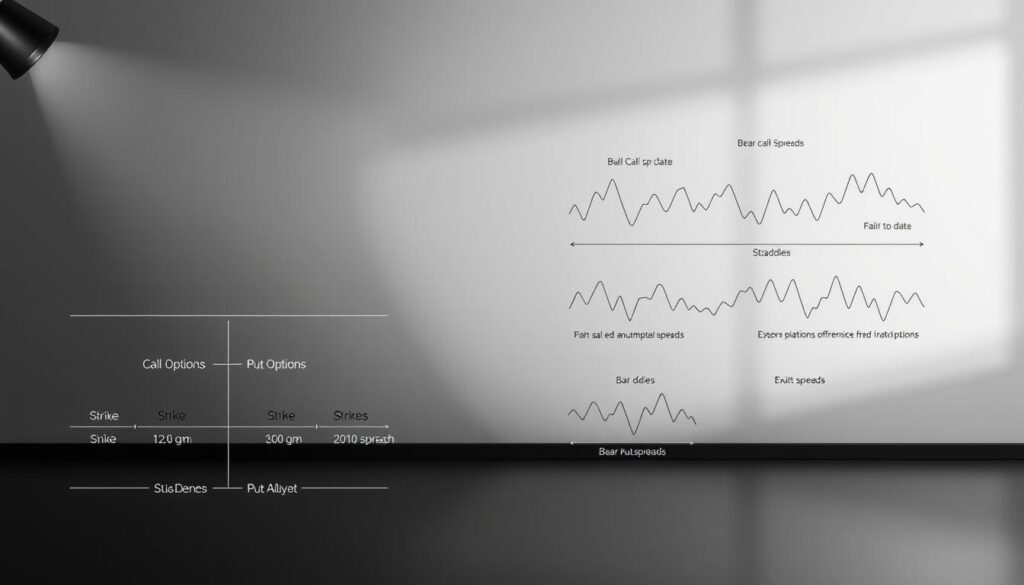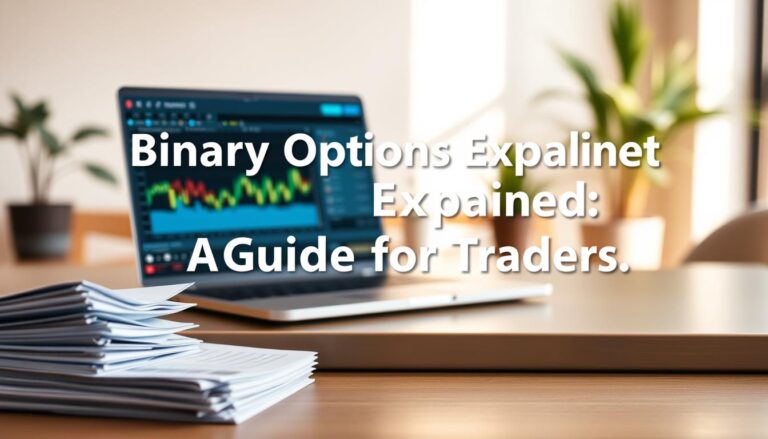Options vs Futures: A Comprehensive Trading Guide
Financial derivatives offer traders diverse strategies to capitalize on price movements or protect against market risks. Among these tools, two stand out for their versatility: options and futures. While both derive value from assets like stocks or commodities, their structures create distinct opportunities and obligations.
An options contract grants the holder the right—but not the requirement—to buy or sell an asset at a preset price before expiration. This flexibility allows investors to manage uncertainty without mandatory commitments. Futures contracts, however, bind both parties to execute trades on predetermined dates unless positions are closed early.
These instruments thrive in speculative and hedging scenarios. Leverage amplifies potential gains but also magnifies losses, making risk assessment critical. Markets in the UK and globally regulate these products through exchanges, ensuring standardized terms and transparency for participants.
Understanding expiration timelines, settlement methods, and margin requirements forms the bedrock of effective derivatives trading. This guide unpacks these elements, equipping traders with foundational knowledge to navigate complex financial landscapes confidently.
Understanding Options Trading
Traders seeking flexible market strategies often turn to contracts that provide rights without obligations. These agreements let buyers capitalize on price movements while limiting losses to upfront costs. At their core, they revolve around underlying assets like shares or commodities.
What Are Options and How Do They Work?
A call option allows purchasing 100 shares of a stock at a fixed strike price before expiration. For example, if Company XYZ trades at £50, a call with a £55 strike lets buyers profit if prices rise above £55. Conversely, a put option grants the right to sell shares at a preset level, protecting against downturns.
The premium—the contract’s price—depends on factors like market volatility and time remaining. Buyers pay this fee upfront, while sellers assume obligation if the buyer exercises the right. Markets typically operate during standard trading hours, aligning with major exchanges.
Key Features and Terminology
Each contract has intrinsic value (difference between market and strike prices) and time value (potential for future gains). Metrics like delta and theta—known as “the Greeks”—measure sensitivity to price changes and time decay. Contracts become profitable when “in the money,” meaning the strike price favors the holder.
Understanding Futures Trading
Markets thrive on predictability, and futures emerged as tools to lock in prices amid uncertainty. Originally designed for agricultural producers and buyers, these agreements now span energy, metals, and financial indices. Their binding nature creates obligations for both parties, distinguishing them from more flexible derivatives.
The Basics of Futures Contracts
A futures contract requires the buyer to purchase—and the seller to deliver—an asset at a fixed price and date. Consider a wheat farmer agreeing to sell 5,000 bushels at £8/bushel in six months. If market prices drop to £6, the farmer avoids losses, while the buyer secures supply below prevailing rates.
Modern markets trade standardized agreements through regulated exchanges. Each specifies asset type, quantity, and settlement dates. While physical delivery was common historically, most positions now close financially before expiry.
The Role of Underlying Assets and Margin Requirements
Underlying assets determine contract values, ranging from crude oil to stock indices. Traders deposit an initial margin—often 5%-15% of the contract’s total value—to open positions. For example, controlling £100,000 of gold might require £10,000 upfront.
Daily price changes trigger margin adjustments. If losses reduce deposits below maintenance levels, traders receive margin calls to replenish funds. Clearinghouses guarantee transactions, minimizing default risks for all participants.
options vs futures: Comparing Trading Instruments

Navigating derivative markets requires understanding how instruments respond to price shifts and contractual demands. While both tools derive value from underlying assets, their risk-reward dynamics diverge sharply.
Risk Profiles and Reward Potentials
Buyers of futures options face capped losses equal to their premium. If markets move against them, they let contracts expire. Sellers, however, risk unlimited losses if forced to fulfill obligations.
With options futures, traders commit to executing deals regardless of price changes. A 10% drop in crude oil could trigger margin calls demanding immediate cash injections. This binding nature amplifies exposure compared to flexible derivatives.
Contract Obligations and Trading Flexibility
One key difference lies in exit strategies. Derivative holders can abandon unfavorable positions by forfeiting premiums. Commodity agreements demand active management—traders must offset positions before expiry dates.
Leverage ratios also vary. While both use borrowed capital, contracts tied to indices often require smaller margins. This allows controlling larger positions with less capital, but multiplies potential setbacks during volatile trade sessions.
Strategies for Call and Put Options

Mastering strategic approaches with calls and puts unlocks opportunities to profit from price swings or shield investments. These tools adapt to bullish optimism, bearish caution, or sideways markets, depending on how traders structure positions.
Implementing Call and Put Strategies
A call option becomes valuable when the underlying asset exceeds the strike price. Consider stock XYZ trading at $49: buying a $50 call gives the right buy shares at that level. If prices surge to $60, exercising yields $10 per share profit before subtracting the premium paid.
Put strategies work inversely. Owning a $100 put on XYZ allows selling shares at that price even if markets crash to $80. Traders gain $20 per share minus initial costs. Both approaches let investors capitalize on movements without owning the asset outright.
Hedging and Speculative Uses in Options Trading
Holding stocks? Protective puts act as insurance against downturns. For every 100 shares owned, one put contract safeguards against losses below the strike price. Calls offer leveraged upside: a £500 premium might control £5,000 worth of shares, amplifying gains if prices rise.
Speculators target volatility spikes. Short-term options contracts magnify returns when markets move sharply. However, time decay erodes value rapidly—strategies succeed fastest when price shifts align with predictions.
Futures Contracts: Leverage and Expiry Dynamics

Market participants use binding agreements to manage price risks while amplifying exposure through leverage. These tools demand strict adherence to margin rules and precise timing due to fixed expiration dates.
Understanding Margin and Leverage in Futures
Traders deposit an initial margin—often 5%-15% of a contract’s value—to control large positions. For example, a gold agreement covering 100 troy ounces at £1,800/ounce requires £9,000 upfront for £180,000 exposure. This 20:1 leverage magnifies both profits and losses.
Daily mark-to-market adjustments update accounts based on price moves. If gold drops £50/ounce, £5,000 gets deducted from the buyer’s account. Falling below maintenance levels triggers margin calls, forcing traders to add funds or close positions.
Expiry dates determine when obligations must settle. Commodity contracts often require physical delivery, while financial instruments use cash payments. Most traders exit before the date to avoid handling crude oil barrels or cattle herds.
Rolling contracts to future months maintains exposure without delivery hassles. This involves closing expiring positions and reopening in the next cycle—a common strategy for long-term hedgers and speculators alike.
Risk Management and Profit/Loss Scenarios in Derivatives

Effective risk management separates successful traders from those who face unexpected setbacks. Derivatives demand careful planning, as both leveraged positions and time-bound contracts create unique challenges.
Managing Volatility in Contracts
Implied volatility directly impacts premium costs for rights-based agreements. When markets swing wildly, time decay accelerates—eroding value faster than stable conditions. Margin requirements in binding contracts adjust daily, requiring constant monitoring.
Real-World Examples of Trading Outcomes
An investor pays £2,000 for a call that expires worthless—maximum loss equals the premium. Conversely, a wheat futures buyer might face £15,000 margin calls if prices drop 10% overnight. These scenarios highlight why position sizing matters.
Techniques for Reducing Financial Exposure
Three strategies help limit risks:
- Setting stop-loss orders at 5% of account value
- Diversifying across assets like energy and indices
- Using protective puts to sell underlying assets at safe levels
Hedging with offsetting positions balances portfolios. Traders might pair oil futures with refinery stocks, creating natural profit buffers. Discipline remains crucial—leveraged gains tempt overexposure, but calculated moves sustain longevity.
Final Insights on Navigating Derivative Markets
Strategic decisions in trading hinge on aligning tools with financial goals and risk tolerance. Contracts requiring fixed obligations demand rigorous margin management, while flexible rights-based agreements suit cautious speculation. Market conditions—volatility, liquidity, and economic trends—shape which instruments deliver optimal results.
UK markets reward traders who master expiration timelines and leverage ratios. Physical delivery requirements in some futures contrast sharply with cash-settled derivatives, influencing position exit strategies. Always verify exchange rules and tax implications before committing capital.
Successful participants balance aggressive plays with protective measures. Diversification across asset classes reduces exposure to single-market shocks. Regular portfolio reviews adapt strategies to evolving regulations and global events like supply chain disruptions or interest rate shifts.
Ultimately, knowledge transforms complexity into opportunity. Continuous education about settlement processes and price drivers builds the confidence needed to thrive in fast-paced financial arenas.






